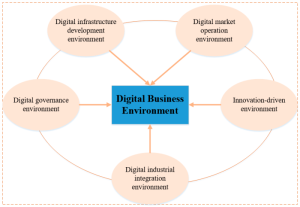
Step right up to the exciting world of Chemicals Industry Trends 2025! Get ready to dive into the latest innovations, growth areas, and sustainability initiatives that will shape the industry in the coming years.
Chemicals Industry Trends 2025
The chemicals industry is expected to witness significant transformations and advancements by the year 2025. From innovative technologies to new market growth areas, the sector is poised for rapid evolution.
Innovations in Chemicals Industry
- Advanced Materials: The development of novel materials with enhanced properties such as strength, durability, and sustainability is expected to revolutionize various industries.
- Digitalization: Integration of digital technologies like artificial intelligence, machine learning, and IoT will optimize processes, increase efficiency, and drive innovation in chemical manufacturing.
- Green Chemistry: Emphasis on sustainable practices and eco-friendly processes to reduce environmental impact and improve overall sustainability of chemical production.
Technological Advancements
- Automation and Robotics: Implementation of automation and robotics in chemical plants will enhance safety, productivity, and precision in manufacturing processes.
- Blockchain Technology: Adoption of blockchain for supply chain management, ensuring transparency, traceability, and security in chemical transactions.
- 3D Printing: Utilization of 3D printing for customized chemical components, rapid prototyping, and efficient production of complex structures.
Market Growth Areas
- Personal Care and Cosmetics: Increasing demand for specialty chemicals in personal care products and cosmetics due to rising consumer awareness about skincare and beauty.
- Healthcare and Pharmaceuticals: Growth opportunities in pharmaceuticals and healthcare sectors for development of innovative drugs, medical devices, and healthcare solutions.
- R&D and Innovation: Focus on research and development to introduce new products, formulations, and technologies that meet evolving market needs and regulatory standards.
Chemicals and Allied Products

The chemicals and allied products industry is constantly evolving, with new trends and innovations shaping the market. By 2025, several key developments are expected to drive growth and transformation in this sector.
Examples of Emerging Chemicals and Allied Products
- Nanomaterials: With applications in electronics, healthcare, and environmental remediation, nanomaterials are projected to witness a surge in demand by 2025.
- Biodegradable polymers: As sustainability becomes a top priority, biodegradable polymers are anticipated to gain traction as a greener alternative to traditional plastics.
- Specialty chemicals for personal care: The rising focus on personal grooming and wellness is expected to boost the demand for specialty chemicals in the personal care industry.
Demand for Organic vs. Synthetic Chemicals
Organic chemicals, derived from natural sources, are forecasted to experience robust growth due to increasing consumer preference for eco-friendly products. On the other hand, synthetic chemicals will continue to dominate certain sectors like pharmaceuticals and agrochemicals, driven by their consistent quality and performance.
Sustainability Initiatives in the Chemicals Industry
- Carbon footprint reduction: Many companies are striving to minimize their carbon emissions through energy-efficient processes and renewable resources.
- Recycling and waste management: Adoption of circular economy principles is on the rise, with a focus on recycling and proper disposal of chemical waste.
- Green chemistry practices: Embracing greener production methods and eco-friendly raw materials to reduce environmental impact and promote sustainability.
Construction and Maintenance
The chemicals industry trends for 2025 will have a significant impact on the construction and maintenance sector. As advancements are made in chemical products, the construction industry will benefit from improved materials and processes, while maintenance practices will become more efficient and sustainable.
Key Chemical Products for Construction and Maintenance
- Concrete Admixtures: These chemicals are essential for enhancing the properties of concrete, such as strength, durability, and workability. By 2025, concrete admixtures are expected to become more environmentally friendly, reducing the carbon footprint of construction projects.
- Coatings and Sealants: Chemical coatings and sealants play a crucial role in protecting surfaces from corrosion, weathering, and wear. Advancements in coating technology will lead to longer-lasting and more durable protective coatings by 2025.
- Adhesives and Sealants: These chemical products are used for bonding materials together in construction and maintenance applications. By 2025, eco-friendly adhesives and sealants will become more prevalent, contributing to sustainable construction practices.
- Waterproofing Chemicals: Waterproofing chemicals are essential for protecting structures from water damage and moisture infiltration. Innovations in waterproofing technology will lead to more effective and environmentally friendly solutions by 2025.
Role of Eco-Friendly Chemicals in Enhancing Sustainability
Eco-friendly chemicals play a crucial role in enhancing sustainability practices in the construction and maintenance sector. By using environmentally friendly chemical products, construction companies can reduce their impact on the environment, minimize waste, and improve overall sustainability. In the coming years, the demand for eco-friendly chemicals is expected to grow as the industry shifts towards more sustainable practices.
Consumer Goods and Services
Consumer goods and services play a crucial role in our daily lives, and the chemicals industry is a key player in providing the necessary materials for manufacturing these products.
Chemicals in Consumer Goods and Services
Consumer goods and services encompass a wide range of products, from personal care items to household cleaners and packaging materials. Some common chemicals used in the manufacturing of these products include:
- Surfactants: These are commonly used in cleaning products, cosmetics, and personal care items for their ability to reduce surface tension.
- Polyethylene Terephthalate (PET): This chemical is widely used in the production of plastic bottles and containers for beverages and food products.
- Fragrances and Flavors: Chemicals are essential in creating scents and tastes for various consumer goods, such as perfumes, detergents, and food products.
- Polyurethane: This versatile chemical is used in the production of foam mattresses, furniture, footwear, and automotive parts.
Changing Consumer Preferences Impact
The chemicals industry is heavily influenced by changing consumer preferences, which drive the demand for more sustainable and eco-friendly products. As consumers become more environmentally conscious, there is a growing trend towards the use of bio-based chemicals in consumer goods and services.
Traditional vs. Bio-based Chemicals
- Traditional Chemicals: These chemicals are derived from petroleum and other non-renewable sources, often leading to environmental concerns and sustainability issues.
- Bio-based Chemicals: These chemicals are derived from renewable resources such as plants, algae, and bacteria, offering a more sustainable and environmentally friendly alternative.
The shift towards bio-based chemicals in consumer goods and services reflects the industry’s commitment to reducing carbon footprints and meeting the demands of conscious consumers.
Business Energy

Chemicals play a crucial role in the energy sector, influencing energy production through various processes and technologies. In the coming years, the trends in the chemicals industry for 2025 are expected to have a significant impact on business energy solutions, driving innovation and sustainability initiatives.
Advancements in Chemical Technologies
- One of the key advancements in chemical technologies is the development of new materials for energy storage, such as advanced batteries and fuel cells.
- Chemical processes for renewable energy sources, like solar and wind power, are continuously improving to enhance efficiency and reduce costs.
- The use of nanotechnology in energy production is on the rise, allowing for more precise control and optimization of energy systems.
Collaborations between Chemicals Industry and Energy Sector
- Collaborations between the chemicals industry and the energy sector are crucial for driving sustainable energy solutions, focusing on reducing carbon emissions and increasing energy efficiency.
- Joint research and development efforts between chemical companies and energy providers can lead to the creation of innovative technologies for clean energy production.
- By leveraging each other’s expertise, the chemicals industry and the energy sector can work together to address environmental challenges and promote a more sustainable future.
Business Environment
In the business environment of the chemicals industry, regulatory changes and environmental policies play a crucial role in shaping trends and practices. Companies are increasingly focusing on sustainability and adapting to evolving regulations to stay competitive in the market.
Impact of Regulatory Changes
- Regulatory changes such as stricter emission standards and waste disposal regulations can impact the operations and costs of chemicals companies.
- Companies need to invest in technology and processes to comply with environmental policies, which can lead to increased efficiency and innovation.
- Adapting to regulatory changes can also enhance the reputation of companies in the eyes of consumers and investors.
Successful Sustainability Practices
- Companies in the chemicals industry are implementing initiatives like recycling and waste reduction to minimize their environmental impact.
- Investing in renewable energy sources and green chemistry practices can help companies reduce their carbon footprint and improve sustainability.
- Collaborating with suppliers and partners to promote sustainability across the supply chain is another successful practice adopted by leading companies.
Challenges and Opportunities for Growth
- One of the main challenges for the chemicals industry is balancing regulatory compliance with operational efficiency and profitability.
- Opportunities for growth lie in developing innovative products and solutions that address sustainability concerns and meet the changing needs of consumers.
- Collaborating with government agencies and industry associations can help chemicals companies navigate regulatory changes and identify new business opportunities.
Final Review
As we wrap up our journey through Chemicals Industry Trends 2025, remember to keep an eye out for the dynamic changes, advancements, and challenges that lie ahead in this ever-evolving sector.
Top FAQs
What are some key technological advancements expected in the chemicals industry by 2025?
Some key technological advancements expected include increased automation, AI integration, and advanced materials development.
How will changing consumer preferences impact the chemicals industry trends for 2025?
Changing consumer preferences are likely to drive demand for eco-friendly and sustainable chemicals in the market.
What role do chemicals play in the energy sector, and how will this influence energy production by 2025?
Chemicals play a crucial role in energy production through processes like refining and energy storage, influencing efficiency and sustainability measures.





